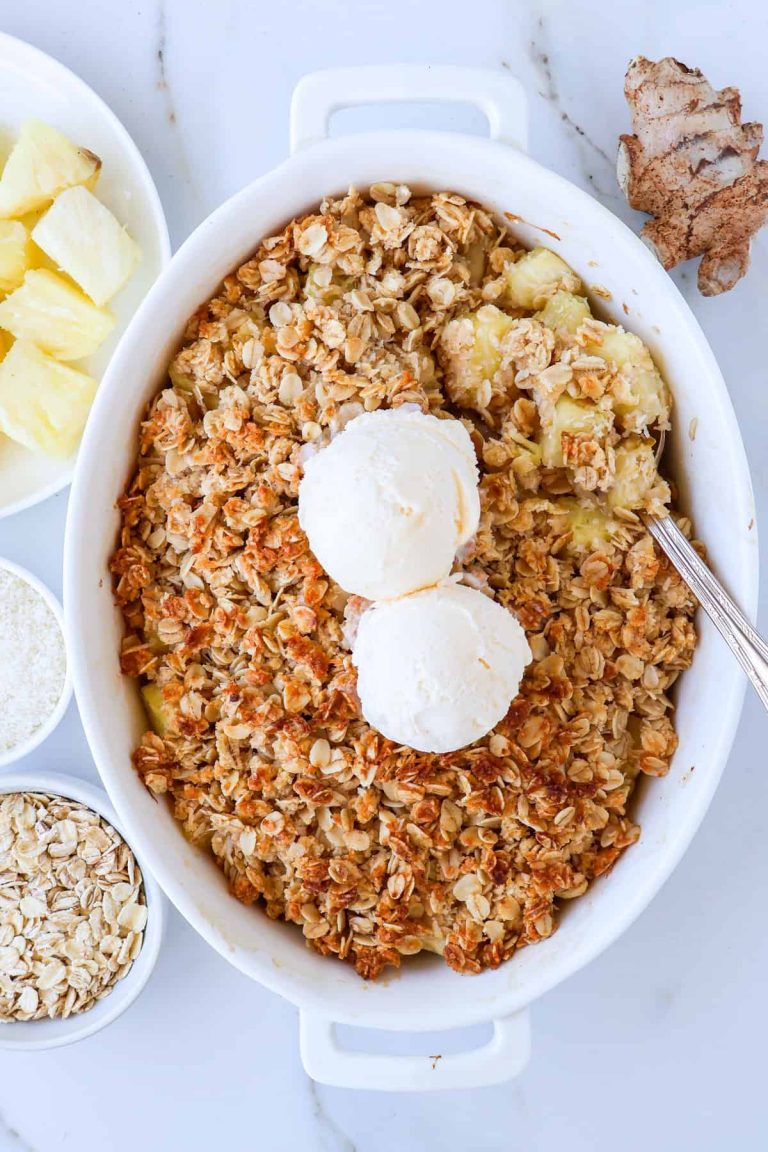Chocolate Oil Cake Recipe: Moist, Delicious, and Easy Variations You’ll Love
Chocolate oil cake is a delectable dessert known for its incredible richness and moist texture, crafted using oil instead of butter. This cake type stands out among chocolate desserts due to its soft crumb and deep chocolate flavor, making it a favorite among bakers and dessert lovers alike.
Understanding the Ingredients
Chocolate oil cake uses straightforward ingredients you likely have in your pantry. These include:
- Flour: Provides structure to the cake.
- Cocoa Powder: Imparts the rich chocolate flavor.
- Sugar: Sweetens the cake and helps retain moisture.
- Baking Soda and Baking Powder: Leavening agents that help the cake rise.
- Salt: Enhances the overall flavor.
- Eggs: Bind the ingredients together and add richness.
- Milk: Adds moisture and tenderness.
- Vanilla Extract: Enhances the chocolate flavor.
- Oil: Contributes to the cake’s moist texture.
- Boiling Water: Bloom the cocoa powder, enhancing the chocolate flavor.
The Role of Oil in the Cake’s Texture
Oil plays a crucial role in the texture of chocolate oil cake. Unlike butter, oil remains liquid at room temperature, resulting in a consistently moist crumb. This characteristic makes chocolate oil cake particularly soft and prevents it from drying out over time.
- Moisture Retention: Oil’s liquid state helps retain moisture, ensuring the cake stays tender longer.
- Texture Consistency: Oil’s uniform distribution throughout the batter, unimpeded by temperature variations, creates a consistent texture.
- Flavor Release: Oil allows other flavors, particularly chocolate, to be more pronounced since it has a neutral taste.
Historical Background of Chocolate Oil Cake
Origins and Evolution
Chocolate oil cake has a unique history in the world of desserts. It likely emerged in the mid-20th century when oil-based cakes became popular in home baking. This shift from butter to oil owed much to the need for easier, more convenient baking methods. Recipes featuring oil gained traction due to their simplicity and the moist texture they imparted to cakes. Home bakers found oil to be a cost-effective and easy-to-use alternative to butter. Over the years, the recipe has evolved, incorporating various types of oils such as vegetable, canola, and even olive oil, each adding subtle flavor differences. Baking enthusiasts have continually refined the recipe, aiming for the perfect blend of rich chocolate flavor and moist, tender crumb.
Popularity Across Different Cultures
The popularity of chocolate oil cake spans numerous cultures, each adding its unique twist. In the United States, it’s a staple at family gatherings and celebrations, often topped with chocolate ganache or cream cheese frosting. In European countries, particularly in France and Italy, bakers incorporate local ingredients like almond flour or Sicilian olive oil, enhancing the cake’s flavor profile. In Asian countries, including Japan and Korea, adaptations include matcha and black sesame seeds, reflecting regional tastes. The cake’s adaptability and the global appeal of chocolate have facilitated its integration into diverse culinary traditions, ensuring its place as a beloved dessert across the world.
How to Make Chocolate Oil Classically
Ingredients Necessary
To achieve the perfect chocolate oil cake, each ingredient plays a crucial role in the outcome. Gather the following:
- All-Purpose Flour: 1 3/4 cups, which gives the cake its structure.
- Granulated Sugar: 2 cups, adding sweetness and moisture.
- Cocoa Powder: 3/4 cup, providing rich chocolate flavor.
- Baking Powder: 1 1/2 teaspoons, responsible for the cake’s rise.
- Baking Soda: 1 1/2 teaspoons, working with the baking powder for leavening.
- Salt: 1 teaspoon to enhance flavor.
- Vegetable Oil: 1/2 cup, key for a moist texture.
- Buttermilk: 1 cup, contributing acidity and tenderness.
- Eggs: 2 large, binding the ingredients together.
- Vanilla Extract: 2 teaspoons, adding depth to the chocolate flavor.
- Boiling Water: 1 cup to bloom the cocoa powder, intensifying the chocolate taste.
- Preheat Oven: Start by preheating your oven to 350°F (175°C). This ensures the cake bakes evenly from the beginning.
- Prepare Pans: Grease and flour two 9-inch round cake pans to prevent the cake from sticking.
- Combine Dry Ingredients: In a large bowl, sift together the flour, sugar, cocoa powder, baking powder, baking soda, and salt. This ensures even distribution of the leavening agents.
- Mix Wet Ingredients: In another bowl, whisk the eggs, oil, buttermilk, and vanilla extract until well combined. The buttermilk and oil will contribute to a moist crumb.
- Integrate Mixtures: Slowly add the wet ingredients to the dry ingredients, mixing until just combined to avoid overworking the batter.
- Add Boiling Water: Gradually stir in the boiling water. The batter will be thin, but this step ensures the cocoa powder fully dissolves, enhancing the cake’s chocolate flavor.
- Divide and Pour: Pour the batter evenly into the prepared pans, ensuring they are filled equally.
- Bake: Place the pans in the preheated oven and bake for 30 to 35 minutes. Insert a toothpick into the center of the cakes; they are done if it comes out clean.
- Cool: Let the cakes cool in the pans for 10 minutes before transferring them to a wire rack to cool completely. This prevents overbaking and ensures the cakes maintain their moist texture.
- **F
Health Aspects of Chocolate Oil Cake
Nutritional Benefits
Chocolate oil cake offers several nutritional benefits when enjoyed in moderation. It often contains cocoa powder, which is rich in antioxidants such as flavonoids. These compounds support heart health and can improve blood flow. Additionally, the oil used in the cake contributes unsaturated fats, which support optimal cholesterol levels. Olive oil, a common choice, provides vitamins E and K and fatty acids that benefit skin and brain health. The cake’s ingredients can be adapted to increase its nutritional value, such as incorporating whole wheat flour or reducing sugar content.
Dietary Considerations and Substitutions
Dietary restrictions can be managed with appropriate substitutions. For a gluten-free option, use almond flour or a gluten-free flour blend in place of wheat flour. To cater to dairy-free diets, replace milk with almond milk or coconut milk. Vegan versions are achievable by substituting eggs with flaxseed meal or apple sauce. Honey or maple syrup can replace refined sugar for those seeking a more natural sweetener. Opt for quality cocoa powder to ensure that the cake remains rich and flavorful, even with these substitutions.
Chocolate Oil Cake Variations
Regional Variations And Twists
Chocolate oil cake displays a rich tapestry of regional variations, reflecting diverse palates and cultural influences. In Italy, using olive oil infuses the cake with a distinct Mediterranean flair. Traditional German recipes may incorporate marzipan, adding a layer of nutty sweetness. In France, including a splash of coffee can accentuate the chocolate flavor, creating a deeper, more robust profile.
Asian adaptations often introduce unique ingredients. Japanese recipes might incorporate matcha powder, creating a fusion dessert that appeals to both chocolate and green tea lovers. Indian variations could include cardamom and a hint of saffron, producing a fragrant and exotic twist.
Experimenting With Flavors And Toppings
Experimenting with flavors and toppings allows you to customize your chocolate oil cake. Integrating spices like cinnamon or chili powder can create intriguing contrasts, adding warmth or subtle heat to each bite. Including orange zest or peppermint extract provides a refreshing tang or minty lift.
Toppings offer another layer of creativity. A simple dusting of powdered sugar can keep it classic, while ganache or chocolate glaze can elevate its richness. Fresh fruits, such as raspberries or strawberries, add a burst of color and natural sweetness. For added texture, sprinkling crushed nuts or coconut flakes introduces a delightful crunch.
By exploring regional variations and experimenting with flavors and toppings, you can transform a basic chocolate oil cake into a personalized, gourmet treat, suitable for any occasion.
Conclusion
Chocolate oil cake is a versatile delight that transcends cultural boundaries and dietary restrictions. Its rich, moist texture combined with the health benefits of cocoa powder and unsaturated fats makes it a treat you can enjoy with less guilt. Whether you prefer traditional recipes or want to experiment with unique regional twists and flavors, there’s a version of chocolate oil cake to suit every palate. So go ahead and get creative in the kitchen. Your perfect chocolate oil cake is just a whisk away!






